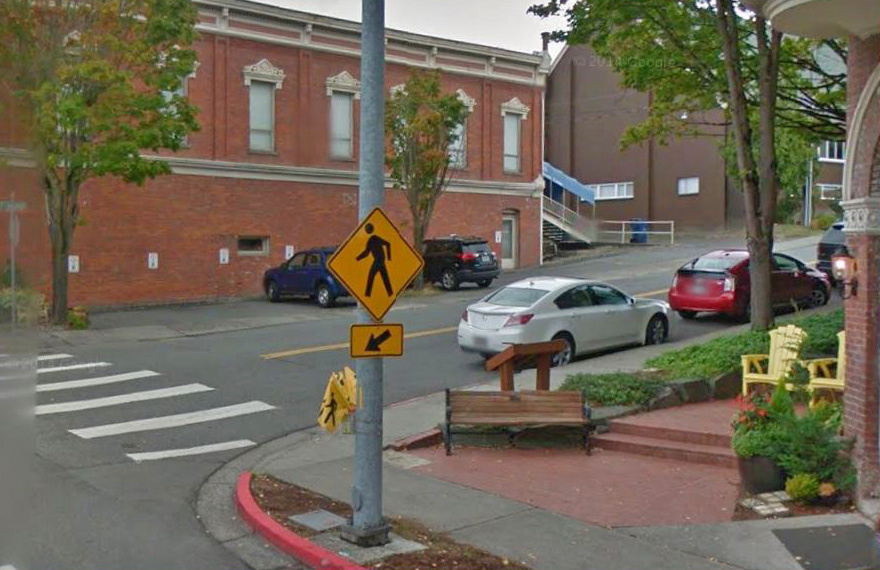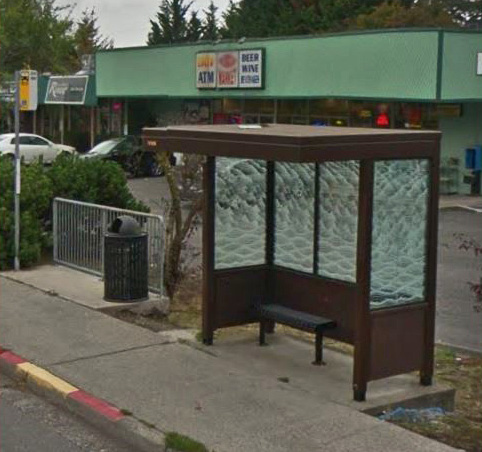5. TRANSPORTATION
Market Street is a principal arterial that is the most traveled route into and along the borders of both the Market and Norkirk Neighborhoods. It also plays an important Citywide role since it is the only principal arterial west of Interstate 405 between NE 85th Street and NE 116th Street. Most of Market Street is fully improved with one lane in each direction, and a series of left turn pockets. The street is fully developed with curbs, gutters, sidewalks, a landscape strip and bike lanes. A landscape median provides additional green space while controlling left-turn movements. A center turn lane north of the 7th Street West intersection extends to Forbes Creek Drive.
Policy MS-17:
Maintain Market Street as a transportation corridor with a balance among transportation modes.
As a principal arterial, it is important on Market Street to maintain safe and convenient facilities for all modes of transportation, transit, pedestrians, and bicycles while maintaining vehicular traffic capacity.
Policy MS-18:
Promote transportation improvements that adequately support the existing and planned land uses in the Market Street Corridor and the adjoining neighborhoods.
Transportation improvements should maintain vehicular capacity on Market Street; minimize traffic delays; enhance connectivity between the Market and Norkirk Neighborhoods; and discourage motor vehicle shortcuts through the neighborhoods.
Policy MS-19:
Incorporate measures that will allow for safe access to Market Street during heavy traffic periods without disrupting the general flow of traffic and the multimodal function of the corridor.
Initial research indicates that issues such as pedestrian safety, sight distance problems, short acceleration lanes, speeding, lack of gaps for entry traffic, and transition to a 25- mph zone near the downtown all contribute to general traffic flow problems, particularly during peak hours. Possible solutions include simplifying intersections; creating gaps in the traffic flow; and calming or slowing traffic on Market Street and adding a northbound transit-only lane between 18th Avenue and Forbes Creek Drive. Ongoing observation and study will be necessary to ensure that Market Street will continue to function as a principal arterial while providing efficient access to adjacent neighborhoods.

Pedestrian amenities
Policy MS-20:
Encourage the use of nonmotorized transportation modes by providing facilities for pedestrians and bicyclists throughout the corridor.
Pedestrian improvements, including pedestrian crossings between the Market and Norkirk Neighborhoods, should be installed at appropriate locations to improve pedestrian safety and enhance the pedestrian environment. The installation of these improvements should be funded by the City and, when appropriate, also required as new development occurs.
Policy MS-21:
Work with transit agencies to enhance transit service connecting the Market Street Corridor and the Market and Norkirk Neighborhoods to other areas of the City and region.
Transit service is an important element of the City’s transportation system. Metro Transit serves the Market and Norkirk Neighborhoods with routes along Market Street that provide service to the Kirkland Transit Center, Downtown Seattle, Totem Lake, Bellevue and other surrounding areas. This corridor is expected to see more frequent transit service depending on King County Metro service changes in the early 2020s intended to provide opportunities to transition automobile traffic to other modes and reduce traffic in the corridor. The Market Street Corridor is one of the main north/south connections through the City and is also a main transit route. The City should work with Metro Transit on facilitating bus access along the corridor in order to encourage transit use and reduce commute time. 
Bus shelter on Market Street


